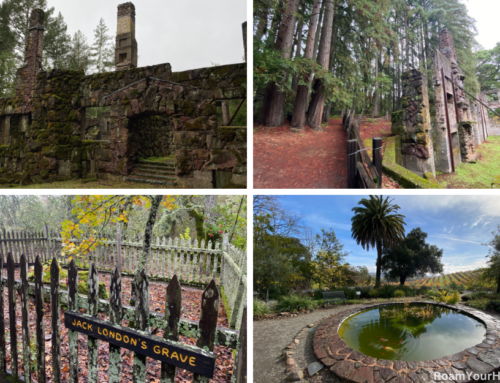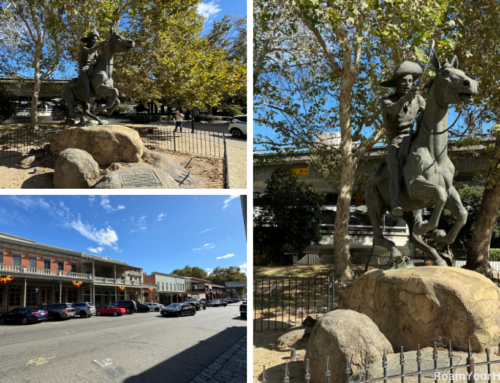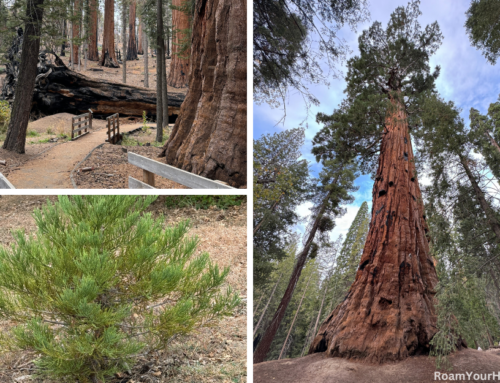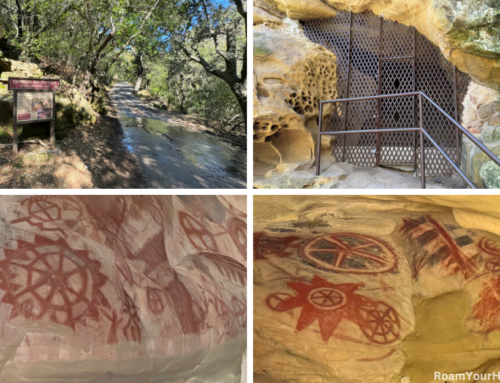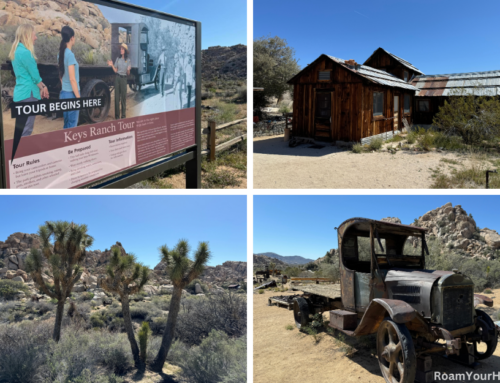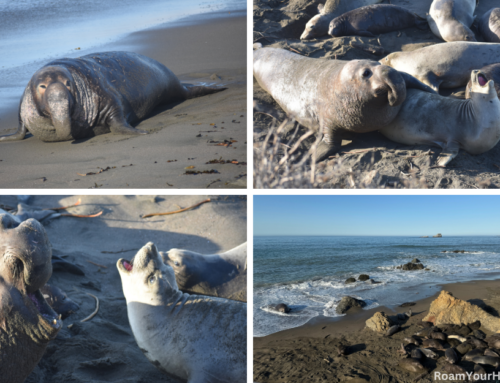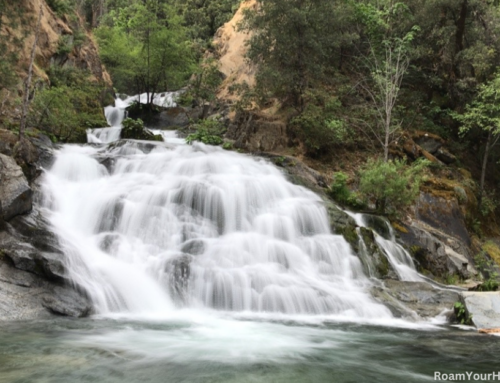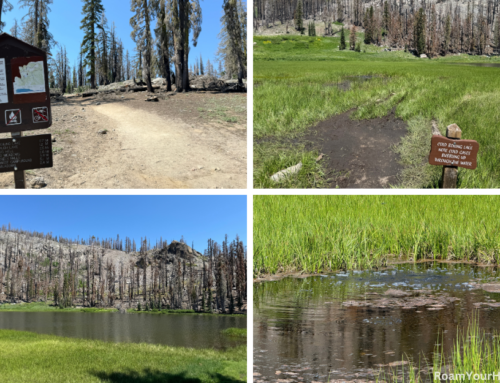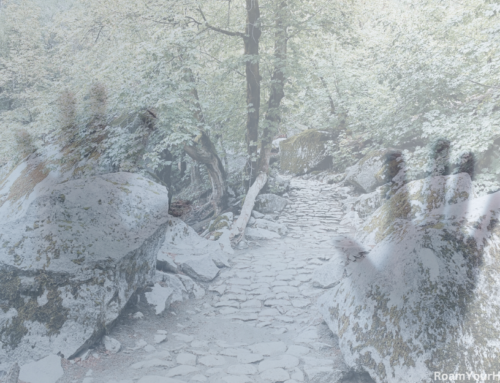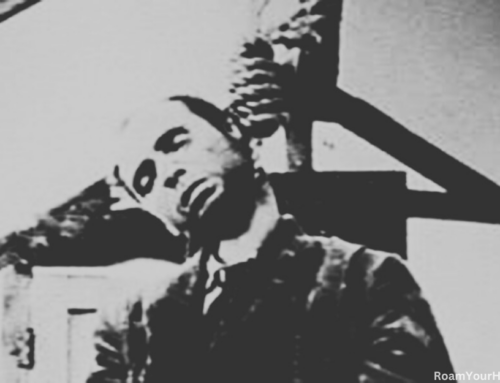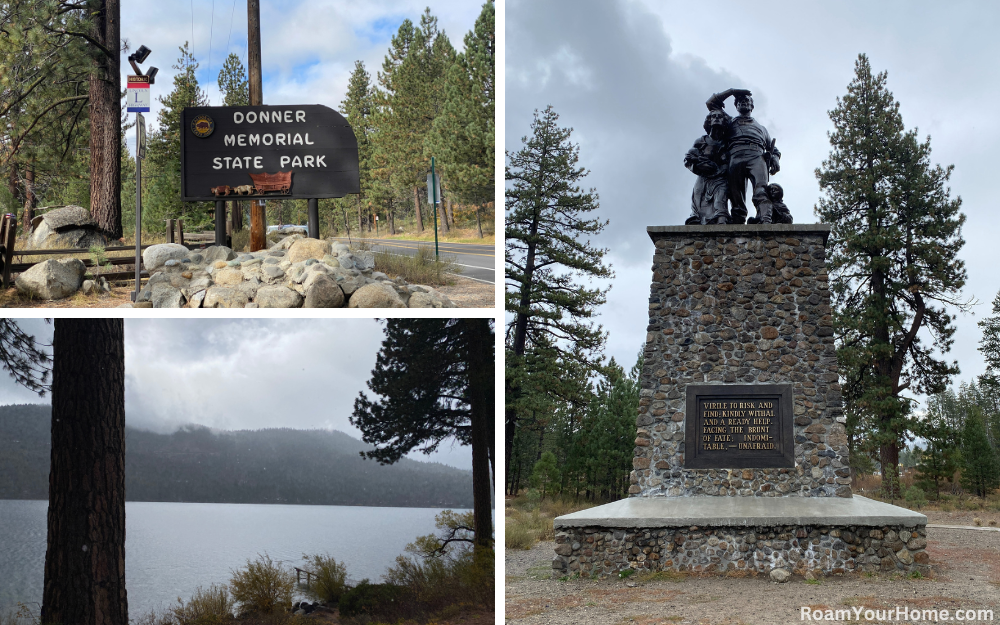
Donner Memorial State Park: History and Guide
The Donner Memorial State Park is near Truckee, California, in the rugged Sierra Nevada Mountains. The park is where a tragic history and natural beauty collide. It was established in 1928 and is best known for commemorating the catastrophic journey of the Donner Party, a group of pioneers who became stranded in the Sierra during the brutal winter of 1846-47. Today, it’s both a solemn historical landmark and a haven for outdoor enthusiasts
My wife and I visited the park on a fall afternoon, ironically about a week on the calendar before the Donner Party would get trapped. We had no snow that day, but it was cold, windy, and raining. I was surprised by how busy it was. The large parking lot was more than halfway full. Getting out of our car, we were not sure what to expect or what to do, so we headed to the visitor center.
The Visitor Center
The Donner Memorial Visitor Center was the perfect starting point for our visit. I was somewhat familiar with the Donner Party. I knew they got stuck, and some of them ate each other. That was about it. There is so much more!
The exhibits about the Donner Party, early pioneers, and the transcontinental railroad construction were very engaging. The center does a great job of blending history with personal stories, making you feel deeply connected to the struggles of those who came before.
The Iconic Pioneer Monument at Donner Memorial State Park
The Pioneer Monument, outside the visitor center, is an imposing statue dedicated in 1918 to honor those who attempted to cross the unforgiving mountains. The statue’s base represents the approximate height of the snowpack that trapped the Donner Party—an astonishing 22 feet. Standing beneath it, you can’t help but try to imagine the unimaginable hardships they endured.
Hiking and Exploring the Park
Beyond its historical significance, Donner Memorial State Park offers some incredible hiking opportunities. The Donner Lake Rim Trail is a moderate hike that rewards you with stunning views of Donner Lake and the surrounding mountains. If you prefer something shorter, the China Cove Trail offers a peaceful stroll along the lake’s edge, perfect for soaking in the crisp mountain air. In the Tahoe National Forest, the Donner Camp Trail is 11 miles away north of Truckee. This hike is not in the park but does loop through where the Donner family members of the Donner Party camped that winter.
During summer, Donner Lake becomes a hotspot for outdoor recreation. You can kayak, paddleboard, or simply relax on the shore, watching the sunlight dance on the water. The landscape transforms into a snowy wonderland in winter, drawing in cross-country skiers and snowshoers.
A Haunting Legacy
We walked around the park with a quiet reverence in the air. While the story of the Donner Party is tragic, the park itself is a place of reflection, adventure, and natural wonder.
A Brief History of the Donner Party
The story of the Donner Party is one of the most infamous tales of survival in American history. What began as a hopeful journey westward in 1846 ended in a harrowing ordeal of starvation, hardship, and cannibalism. This tragic episode serves as a grim reminder of the dangers faced by pioneers on the Oregon and California Trails.
The Journey Begins
In the spring of 1846, nearly 90 emigrants, primarily composed of the Donner and Reed families, set out from Springfield, Illinois, bound for California. Like many other pioneers of the time, they sought new opportunities in the West, enticed by promises of fertile land and a better future. The group traveled along the well-established Oregon Trail until they reached Fort Bridger in present-day Wyoming.
At this crucial juncture, they faced a fateful decision: continue along the traditional route or take a newly promoted shortcut known as Hastings Cutoff, promoted by explorer Lansford Hastings.
More experienced travelers warned against the new trail. One described the great desert and roughness of the Sierra and told the emigrants to “take the regular wagon track and never leave it.”
Despite the warnings, the promise of shaving 300 miles and weeks off an already long journey was too tempting to pass. After electing George Donner captain, 89 people with 20 wagons left the main trail on July 20th, 1846.
The decision to opt for the untested “new and better” route would seal their fate.
The Fatal Mistake: Hastings Cutoff
Hastings Cutoff turned out to be far more difficult than advertised. Instead of saving time, the rugged terrain of the Wasatch Mountains and the salt flats of Utah drastically slowed their progress. Years of traffic on the main Oregon Trail left an easy-to-follow obvious path, whereas the Cutoff was more challenging to maintain.
On September 26, two months after taking the cutoff, the party rejoined the traditional trail along a stream that became known as the Humboldt River. The “shortcut” had probably set them back by a month. The delays left the party dangerously behind schedule as winter approached.
Winter arrived early in 1846. By the time they reached the eastern slopes of the Sierra Nevada in late October, snowfall had blocked their passage through the mountains. Trapped near Truckee Lake (now Donner Lake), they built makeshift shelters and prepared to wait out the winter.
Desperation and Starvation
As weeks turned into months, hope dimmed as hunger grew with dwindling food supplies, and starvation took hold. Attempts to hunt and fish provided little relief. The emigrants had no experience in a mountain environment. In December, 15 members, later known as the “Forlorn Hope,” attempted to cross the mountains to seek help. They stumbled through snowy mountains for 33 days with only six days worth of food. Desperate and starving, they ate the bodies of their dead companions. Only seven lived through the ordeal, reaching a settlement in California after a grueling journey.
Meanwhile, back in camp, conditions deteriorated rapidly. People resorted to eating ox hides, leather, and even their own pets. Eventually, in the face of extreme starvation, some here, too, turned to cannibalism, eating the bodies of those who had perished.
Rescue and Aftermath
Word of the stranded pioneers reached California, and multiple rescue missions were launched over the next few months. By April 1847, the last survivors were finally brought to safety. Of the nearly 90 members of the Donner Party, only 48 survived—many of them forever traumatized by their ordeal.
After getting rescued, 13-year-old Virginia Reed, who was a member of the infamous Donner Party, wrote a letter to a family member saying, “O Mary, I have not wrote you half the trouble we have had,” she went on to say her family had not resorted to cannibalism, but others had. Then she offered a bit of advice only a member of the Donner Party could have given: “Never take no cutoffs and hurry along as fast as you can.”
The tragedy of the Donner Party became a cautionary tale about the perils of untested shortcuts and the brutal realities of westward migration. It also sheds light on the resilience of the human spirit in the face of unimaginable suffering.
Legacy of the Donner Party
Today, the story of the Donner Party is preserved at Donner Memorial State Park in California, where visitors can learn about the pioneers’ struggles and the impact of their journey. Their experience remains one of the most haunting episodes in American history, a chilling reminder of both the promise and peril of manifest destiny.
If you’re traveling through the Truckee/Tahoe area, Donner Memorial State Park is a must-visit.
Have you visited this historic park? Let me know your thoughts or share your own experiences!

